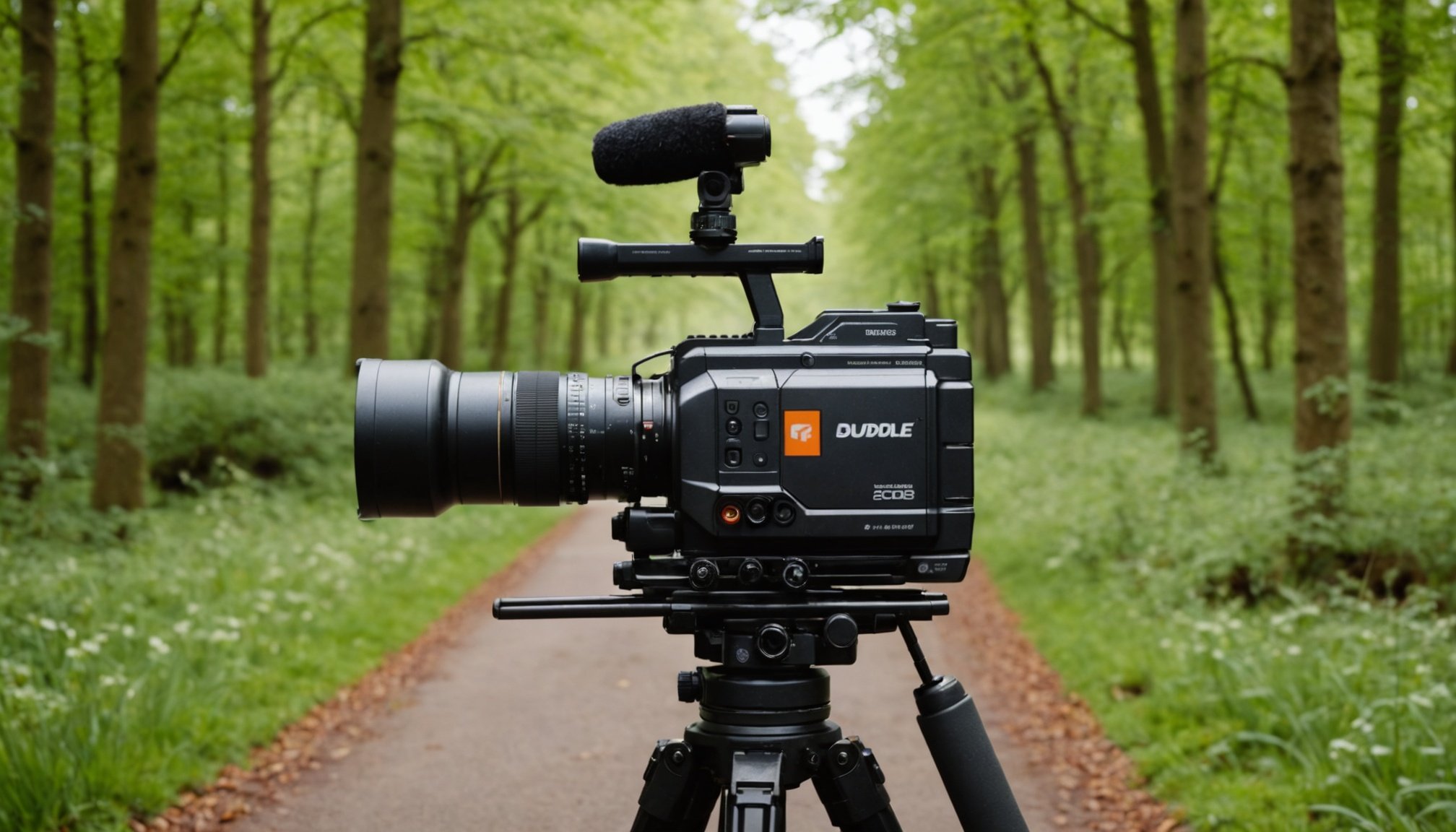Unlocking UK Film Productions: A Comprehensive Roadmap to Securing Location Shooting Permits
Filming on location in the UK can be a daunting task, especially for those new to the industry. From navigating complex permit processes to ensuring compliance with local regulations, the journey to securing the perfect filming location can be overwhelming. However, with the right guidance, you can streamline this process and focus on what truly matters – creating compelling and cutting-edge video content.
Understanding the Basics of Location Shooting Permits
Before diving into the nitty-gritty of permit applications, it’s essential to understand why these permits are necessary. Permits serve as a safeguard, ensuring that filming activities do not disrupt public services, housing, health, or social care facilities. Here’s a breakdown of what you need to know:
Also to see : Creating a UK Ethical Investment Fund: Your Comprehensive Step-by-Step Blueprint
Why Permits are Necessary
Permits are required to ensure that filming does not cause antisocial behaviour, disrupt local businesses, or impact public sector services such as libraries, healthcare facilities, and housing. For instance, filming in residential areas might require notifying nearby residents to avoid any disruptions, a process that is often facilitated by local councils[1].
Key Documents and Information Required
When applying for a filming permit, you will typically need to submit several key documents:
Have you seen this : Comprehensive Indoor Sports Facility Safety Protocols: UK Guidelines for Health and Wellbeing
- Student Filming Application Form: If you are a student, this form is crucial for obtaining the necessary permissions[1].
- Public Liability Insurance: A valid certificate of public liability insurance is mandatory. This insurance protects against claims arising from accidents or property damage during filming[1][3].
- Risk Assessment: A detailed risk assessment is necessary to outline potential hazards and the measures to mitigate them. This is particularly important for productions involving stunts, special effects, or filming in sensitive locations[1][2][3].
- Method Statement: This document outlines what you intend to do on site and how you will do it, providing reassurance to property owners and local authorities[1].
Planning Your Shoot: A Step-by-Step Guide
Planning is the backbone of any successful film production. Here’s how you can ensure your shoot is well-planned and compliant with local regulations:
Choosing the Right Location
Deciding on the best location for your film is crucial. If you plan to film on private land, you need to identify the landowner and obtain their permission. Public spaces like roads, pavements, and parks require permits from the local council[1].
Pre-Application Advice
For complex shoots, especially in locations like The Royal Parks, it’s advisable to have a pre-application conversation with location managers. This helps in determining what is feasible and what may not be possible from the outset[2].
Formal Application and Planning
Submit a formal application in writing, including detailed information about the proposed dates, times, locations, content, and crew numbers. This application should be accompanied by the necessary documents such as public liability insurance and risk assessments[2].
Securing Permits and Professional Support
Securing the right permits and professional support can make a significant difference in the smooth execution of your film production.
Working with Location Experts
Location managers play a pivotal role in minimizing risks and ensuring compliance with local regulations. They have in-depth knowledge of local sites, logistics, and the necessary permits required. For example, filming in Essex can be facilitated by the Essex Film Office, which helps in negotiating permit costs and finding suitable locations[1][3].
Ensuring Transparency and Communication
Transparency between production teams, property owners, and local authorities is vital. This includes notifying residents or businesses near the filming location and obtaining their consent where necessary. Clear communication can prevent misunderstandings and ensure a smooth production process[1][3].
Managing Risks and Insurance
Risk management is a critical aspect of film production, especially when filming on location.
Protecting Productions with Insurance
Insurance coverage is essential for mitigating potential legal, financial, and reputational risks. General liability insurance is often required to obtain permits, and additional coverage may be necessary for high-risk activities like stunts or filming in protected areas[3].
Conducting Detailed Risk Assessments
Risk assessments help identify potential hazards and establish protocols to minimize them. For instance, if your production involves animals, stunts, or special effects, a detailed risk assessment will outline the necessary safety precautions and protocols[3].
Practical Considerations for Location Scouting
Location scouting is more than just finding a visually appealing spot; it involves a thorough evaluation of the site to ensure it meets all your production needs.
Tech Scout Checklist
A tech scout checklist is invaluable for identifying potential issues early on. Here are some key considerations:
- Light Sources: Assess the natural and artificial light sources at the location and how they will impact your shoot[4].
- Parking: Ensure there is adequate parking for the cast, crew, and equipment. This can be a significant logistical challenge and may require arranging with nearby lots[4].
- Neighbors and Permitting: Consider the impact on nearby residents and businesses. Permitting the location with the city and notifying neighbors can prevent disruptions and ensure compliance[4].
Financial and Administrative Aspects
The financial and administrative aspects of securing permits and managing a film production are often overlooked but are crucial for the success of your project.
Fees and Charges
Filming locations often come with fees, which can vary based on the location and the scale of the production. For example, The Royal Parks charge for location filming, with fees outlined in their rate card. Additional services and cancellation fees may also apply[2].
Tax and Business Rates
Understanding the tax implications and business rates associated with filming in different locations is important. For instance, productions may be eligible for tax relief, and business rates might affect the overall cost of filming in certain areas.
Case Studies and Best Practices
Real-world examples can provide valuable insights into the complexities and best practices of securing location shooting permits.
Example: Filming in The Royal Parks
Filming in The Royal Parks involves a detailed process, including pre-application advice, formal application, and a planning meeting if necessary. The process ensures that the production complies with the park’s regulations and sensitivities, such as avoiding filming during sensitive ecological seasons[2].
Example: Student Filming in Essex
For students filming in Essex, the Essex Film Office provides significant support. They help in negotiating permit costs, finding suitable locations, and ensuring compliance with local regulations. This support can be invaluable for young people looking to produce high-quality video content without the burden of complex bureaucratic processes[1]. and Final Tips
Securing location shooting permits in the UK is a multifaceted process that requires careful planning, compliance with regulations, and a thorough understanding of the risks involved.
Key Takeaways
- Plan Ahead: Allow at least one month for the application process, and consider the time needed for complex shoots involving stunts or special effects[1].
- Seek Professional Support: Work with location managers and local film offices to navigate the permit process efficiently[1][3].
- Ensure Transparency: Maintain clear communication with local authorities, property owners, and nearby residents to avoid disruptions and ensure a smooth production[1][3].
- Manage Risks: Conduct detailed risk assessments and secure the necessary insurance coverage to protect your production from potential liabilities[3].
By following these guidelines, you can unlock the full potential of your film production, ensuring that your video content is not only cutting-edge but also compliant with all the necessary regulations.
Additional Resources
For further guidance, here are some additional resources you might find useful:
| Resource | Description |
|---|---|
| Essex Film Office | Supports student filming, provides guidance on permit applications |
| The Royal Parks | Detailed guide to filming in Royal Parks, including application process |
| Film London | Offers support for filming in London, including method statements and risk assessments |
| No Film School | Provides a comprehensive tech scout checklist for location scouting |
Quotes and Insights
- “Unauthorized access to protected or public filming locations can pose significant risk. Without the correct permits, production teams could face severe fines, investigations by authorities or even be banned from filming in certain locations.”[3]
- “Location management plays a pivotal role in minimizing risks and avoiding costly mistakes. From the onset, production teams must work closely with local authorities to obtain permits that detail where and how filming can take place.”[3]
- “Transparency between production teams, owners, authorities and the surrounding community is vital to preventing misunderstandings or disputes.”[3]
By leveraging these resources and insights, you can navigate the complex landscape of location shooting permits in the UK with confidence, ensuring your production is both successful and compliant.











